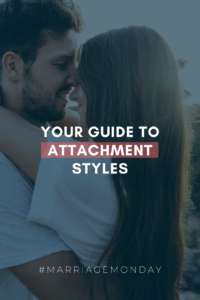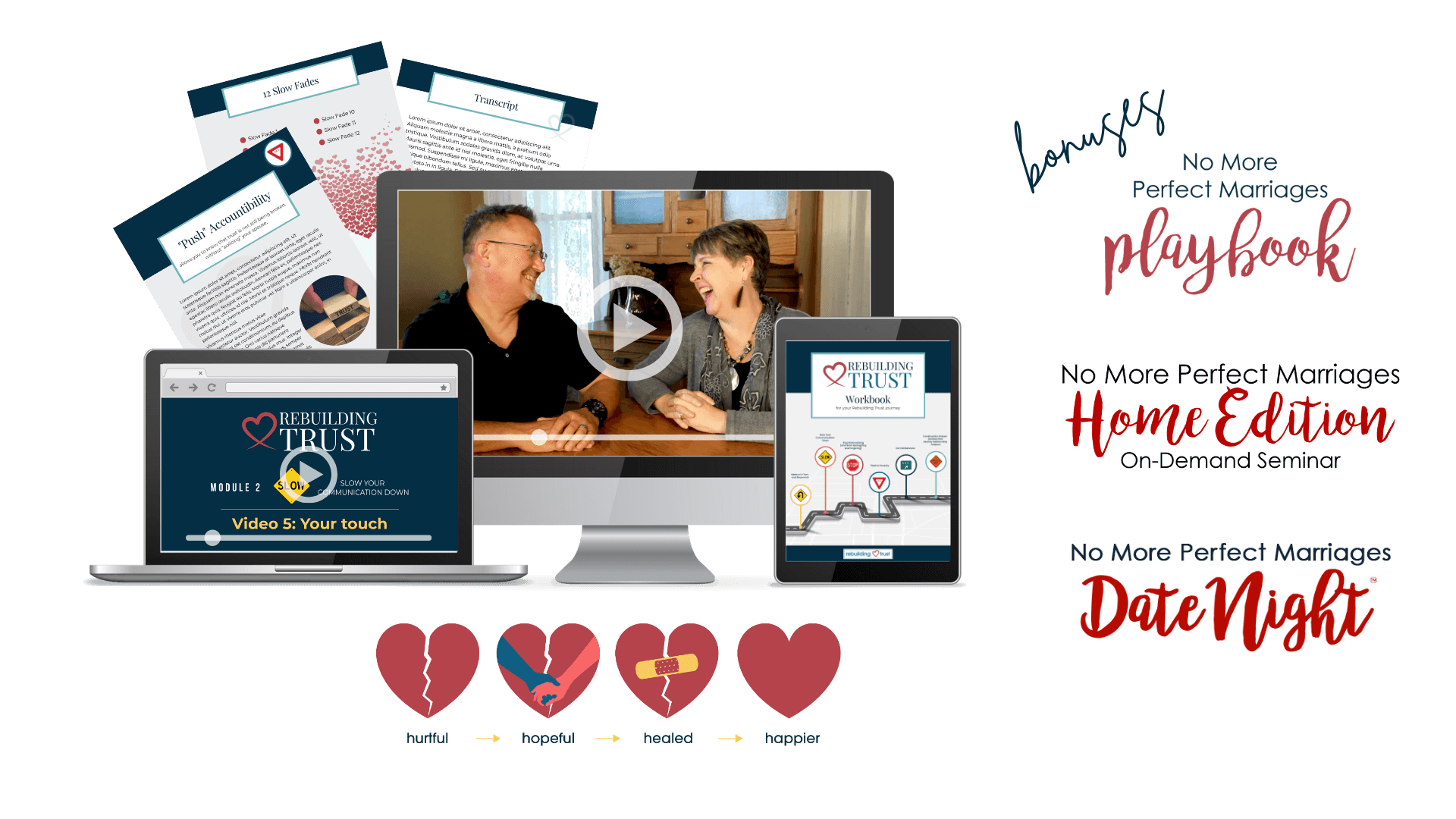 Did you know that your attachment style will determine how you form relationships, interact with others, and respond to conflict? We talk about attachment styles often because it was the number one thing that helped us understand how we relate to one another within our marriage and what what getting in the way of building connection. Understanding attachment styles also helps the couples at our marriage intensives or in our marriage coaching understand themselves and their spouse better.
Did you know that your attachment style will determine how you form relationships, interact with others, and respond to conflict? We talk about attachment styles often because it was the number one thing that helped us understand how we relate to one another within our marriage and what what getting in the way of building connection. Understanding attachment styles also helps the couples at our marriage intensives or in our marriage coaching understand themselves and their spouse better.
What is an attachment style?
Attachment theory was originally created by British psychoanalyst John Bowlby. He discovered that people develop specific approaches to connection as a result of how either an emotional bond or a lack of one was formed in our childhood. For instance, a lack of secure bonding with your parents can produce feelings of insecurity and distrust.
This experience early in life creates the lens through which you interpret actions in future relationships. It carries over into adulthood and the way we form romantic relationships, friendships, and even how we bond with our own children.
While our attachment style has a huge impact on building relationships and finding connections, don’t be discouraged if you don’t have a healthy style. You are not “stuck” with an unhealthy attachment style. You can change your style through positive emotional experiences, recognizing when you are falling into negative patterns, and seeking out therapy or counseling.
Three Primary Attachment Styles
There are three primary attachment styles and they are anxious, avoidant, and secure. There is sometimes a fourth attachment style referred to as “disorganized.” To better understand what most of us deal with, we’ll focus on the three primary styles here.
- Secure Attachment – Those who have this style can navigate relationships with confidence and without fear of abandonment.
- Anxious Attachment – This style tends to need constant reassurance due to their fear of abandonment. They would rather sacrifice their happiness than risk losing a positive connection with their partner.
- Avoidant Attachment – People with this attachment style highly value independence and avoid difficult emotions.
To put it simply, people with the avoidant attachment style can often come across insensitive in a relationship while those with an anxious attachment style will often come across as insecure in a relationship.
Someone with a secure attachment style is able to accept their partner’s shortcomings and be direct and open about their feelings and needs. They tend to do better in conflicts because, instead of becoming defensive, they are able to problem-solve, collaborate, and find a healthy solution to the situation.
What Anxious Attachment Looks Like in Relationships
Someone with an anxious attachment style will likely experience codependency (I’m only ok if you are ok.), discomfort at the thought of being alone, fear of abandonment, fear of rejection, a consistent need for validation, and are highly sensitive to others’ emotions. This is not an exhaustive list by any means, but these should give you an idea of what it looks like.
Within relationships, the anxious attachment style will check their phone in the hopes of receiving a message from their spouse. They find themselves wishing for the intense intimacy they had at the beginning of the relationship. They frequently misread other people’s body language, actions, and words. They also may often want regular reassurance that the relationship is alright.
A person with this attachment style might say things like:
“I just want to be in the same room as you.”
“Are we okay?”
“How am I doing?”
What Avoidant Attachment Looks Like in Relationships
Someone with an avoidant attachment style will have high independence, self-sufficiency, struggle to depend on other people, rarely know what they need, can feel uncomfortable with intimacy, and feel like their partner often overreacts.
Within relationships, this can look like someone viewing their spouse as needy for seeking intimacy. They may miss cues and body language that their partner is either hurt or upset. People with an avoidant attachment style often wish their spouse would be more independent and confident instead of looking for reassurance from them.
A person with this attachment style might say things like:
“You’re just too sensitive.”
“Facts are more important than feelings.”
“What I feel or don’t feel doesn’t matter.”
LISTEN: What is a Love Style? with Milan & Kay Yerkovich | Episode 108
How to Move to a Secure Attachment
Most of us fall into the anxious or avoidant attachment styles. However, there’s good news! We have the ability to change and grow emotionally from our current style into a more secure attachment. That isn’t to say it won’t take some serious work and time, but it’s important to know that you are not doomed to your attachment style.
Here are some things you can do to help you move into a more secure attachment style:
- Take time to discover which attachment style you currently have. (Here’s a great test to take!)
- Consider enlisting the help of a skilled counselor, therapist, or coach to help you understand your approach to relationships, and why you approach them that way.
- Learn and practice new coping mechanisms and emotional skills to improve how you connect with others.
For the Avoidant Attachment Style
- Make a timeline of your life: This exercise causes you to take a look at the major experiences in your life and the emotions or beliefs associated with those experiences.
- Take your emotional temperature: You can use a feeling wheel to help identify your emotions throughout the day. Use set times and a notebook to track any patterns and you may be surprised as you give yourself space to better understand your emotions.
- Learn how to make space for other people’s emotions: Instead of jumping right to fixing or stopping their feelings, embrace the opportunity to feel with them. You can offer comfort, validation, or empathy. Doing this more and more will help it start to feel normal!
- Prioritize people over projects: This will likely feel rather uncomfortable in the beginning, but it’s important to do because it will change your perspective. Connecting with someone you love should be your priority over tasks.
For the Anxious Attachment Style
- Learn to regulate your emotions: This is where techniques like box breathing, taking a walk, taking a cold shower, and journaling can be beneficial.
- Strengthen your relationship with God: Who does God say you are? Is that dependent on how other people view you? He made your unique personality and all that you bring to the world!
- Find your voice – Learn to make requests instead of commenting, complaining, or criticizing.
- Avoid making assumptions – When we do this, we are telling ourselves a story about the situation that may not be accurate. We can counter making assumptions by checking in with our spouse and asking, “The story I’m telling myself is _____. Am I reading that correctly or incorrectly?”
How You and Your Spouse Can Help One Another
We can do the important work of moving to a more secure attachment on our own and together as a couple.
While your growth and health should not rely solely on the actions of your spouse, there are some ways we can help each other move to a more secure attachment style.
If you have an anxious spouse:
- Ask about their childhood experiences: Much of their experiences of fear, insecurity, and rejection helped form their anxious attachment. By learning about them, you can understand how their life has contributed to their beliefs and actions today.
- Comfort your spouse: This communicates trust and security. It could be as simple as listening intently to a story they’re telling or offering a 10-15 second holding hug.
- Offer reassurance: Your spouse needs to know that they can come to you with their feelings. Reassure them often that they can tell you anything and that you are a safe place for them.
If you have an avoidant spouse:
- Don’t take it personally: The natural reaction of an avoidant spouse is to push you away or keep their distance. This has nothing to do with you and often has everything to do with their past experiences.
- Avoid being controlling: Your spouse values independence and will often shut down or retreat if they feel like they are being controlled.
- Talk when you are calm: Since avoidant types dislike emotions, it is best if you can push off having serious discussions until you can calmly explain how you feel.
Taking the time to learn about your attachment styles can be a great benefit as you learn how to grow individually and build stronger relationships! In our marriage, we learned that Mark carried an anxious attachment style and Jill carried an avoidant attachment style. When we looked back on our relationship, it was so easy to see where these approaches to relationships caused deep conflict and heartache in our marriage. Now, however, we both operate much more often as secure connectors. Our conflict has been greatly reduced and we have experienced wonderful healing in our relationship.
Our hope and prayer is that reading this guide can be the start of improved connection between you and your spouse. If we can help you unpack attachment styles in your life or marriage, get a coaching call scheduled! You can become a secure connector. We are in your corner!
********
Do you need to rebuild trust?
Learn how through our free Rebuilding Trust webinar!













